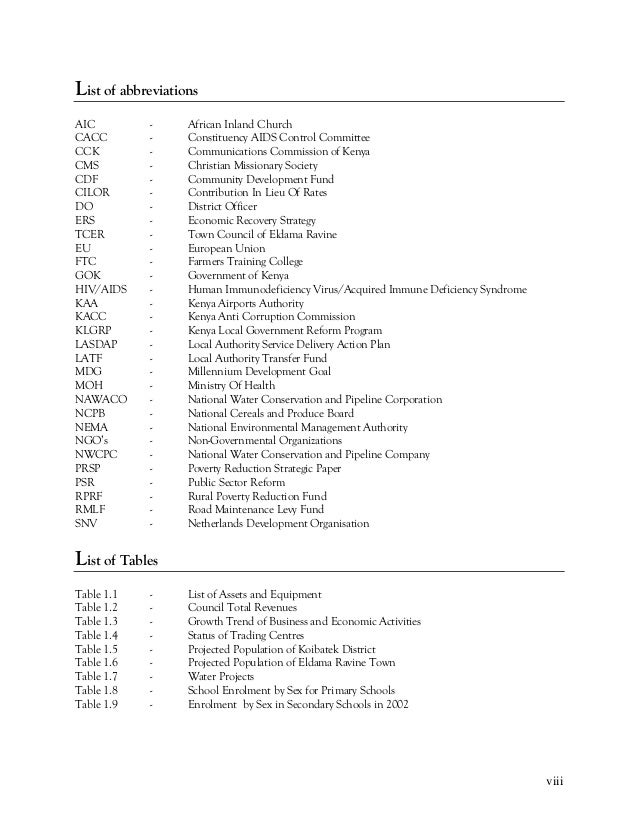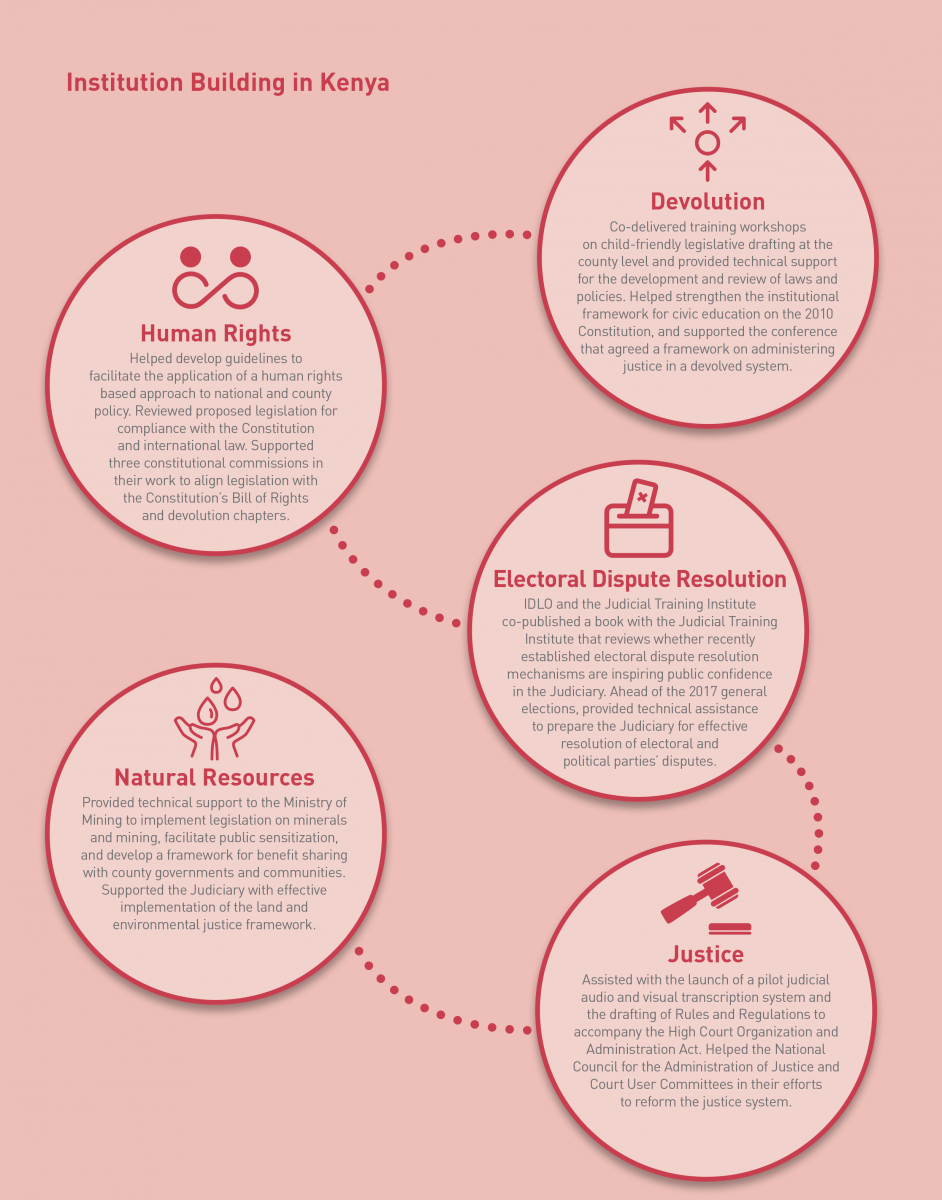Kenya Local Government Reform Program
Kenya Local Government Reform Programme Kenya Ports Authority. While maintaining a sound macro-economic framework, this Recovery Program gives. Independent Task Force Program; CFR. Understanding Kenya’s. That the country needs constitutional reforms that strengthen local government and rectify.
Economy of Kenya After independence, Kenya promoted rapid economic growth through public investment, encouragement of smallholder agricultural production, and incentives for private (often foreign) industrial investment. Gross domestic product (GDP) grew at an annual average of 6.6% from 1963 to 1973.

Agricultural production grew by 4.7% annually during the same period, stimulated by redistributing estates, diffusing new crop strains, and opening new areas to cultivation. After experiencing moderately high growth rates during the 1960s and 1970s, Kenya's economic performance during the 1980s and 1990s was far below its potential. The economy grew by an annual average of only 1.5% between 1997 and 2002, which was below the population growth estimated at 2.5% per annum, leading to a decline in per capita incomes.
The decline in economic performance was largely due to inappropriate agricultural, land, and industrial policies compounded by poor international terms of trade and governance weaknesses. Increased government intrusion into the private sector and import substitution policies made the manufacturing sector uncompetitive. The policy environment, along with tight import controls and foreign exchange controls, made the domestic environment for investment unattractive for both foreign and domestic investors. From 1991 to 1993, Kenya had its worst economic performance since independence.
Growth in GDP stagnated, and agricultural production shrank at an annual rate of 3.9%. Inflation reached a record 100% in August 1993. In the mid-1990s, the government implemented economic reform measures to stabilize the economy and restore sustainable growth, including lifting nearly all administrative controls on producer and retail prices, imports, foreign exchange, and grain marketing. In spite of the economic reform measures, the Kenyan Government's failure to meet commitments related to governance led to a stop-start relationship with the International Monetary Fund (IMF) and World Bank, both of which suspended support in 1997 and again in 2001. During President Kibaki's first term in office (2003-2007), the Government of Kenya began an ambitious economic reform program and resumed its cooperation with the World Bank and the IMF. There was some movement to reduce corruption in 2003, but the government did not sustain that momentum.
Economic growth began to recover in this period, with real GDP growth registering 2.8% in 2003, 4.3% in 2004, 5.8% in 2005, 6.1% in 2006, and 7.0% in 2007. However, the economic effects of the violence that broke out after the December 27, 2007 general election, compounded by drought and the global financial crisis, brought growth down to less than 2% in 2008. In 2009 there was modest improvement with 2.6% growth. In May 2009, the IMF Board approved a disbursement of approximately $200 million under its Exogenous Shock Facility (ESF), which is designed to provide policy support and financial assistance to low-income countries facing exogenous but temporary shocks.
The ESF resources were meant to help Kenya recover from the negative impact of higher food and international fuel and fertilizer costs, and the slowdown in external demand associated with the global financial crisis. The government's ability to stimulate economic demand through fiscal and monetary policy remains fairly limited, while the pace at which the government is pursuing reforms in other key areas remains slow.
The Privatization Law was enacted in 2005, but only became operational as of January 1, 2008. Parastatals Kenya Electricity Generating Company (KenGen), Telkom Kenya, and Kenya Re-Insurance have been privatized. The government sold 25% of Safaricom (10 billion shares) in 2008, reducing its share to 35%.
Accelerating growth to achieve Kenya's potential and reduce the poverty that afflicts about 46% of its population will require continued de-regulation of business, improved delivery of government services, addressing structural reforms, massive investment in new infrastructure (especially roads), reduction of chronic insecurity caused by crime, and improved economic governance generally. The government's Vision 2030 plan calls for these reforms, but implementation will be delayed by the reconstruction effort, coalition politics, and line ministries' limited capacity.
In June 2008, the government introduced a revised but still ambitious Vision 2030 plan that seeks to address the economic challenges stemming from the political crisis while still striving to meet growth benchmarks. Economic expansion is fairly broad-based and is built on a stable macro-environment fostered by government, and the resilience, resourcefulness, and improved confidence of the private sector. Despite the post-election crisis, Nairobi continues to be the primary communication and financial hub of East Africa. It enjoys the region's best transportation linkages, communications infrastructure, and trained personnel, although these advantages are less prominent than in past years. In 2009, fresh horticulture exports rose to $947 million from $838 million in 2008 (though still not to the level of a record high of U.S.
$1.12 billion in 2007), while tea exports rose to $928 million from $850 million in 2008. Tourism has rebounded from the drop experienced in 2008 after the post-election violence, bringing in $807 million in 2009, an increase of 19% from 2008. In the first quarter of 2010, arrivals continued to increase, registering 19% growth compared to the same period in 2009. Africa is Kenya's largest export market, followed by the European Union (EU). Kenya benefits significantly from the African Growth and Opportunity Act (AGOA), but the apparel industry is struggling to hold its ground against Asian competition. Currently there are 19 apparel factories, 1 yarn/fabric company, and 6 accessory companies (labels, sewing supplies, hangers) operating in the Export Processing Zones. Ninety-four percent of AGOA exports are garments, and Kenya’s garment exports under AGOA fell from U.S.
$265 million in 2006 to U.S. $195 million in 2009.
Kenya does not systematically collect foreign direct investment (FDI) statistics and its historical performance in attracting FDI has been relatively weak. The stock of FDI in 2005 was estimated to be about $1.04 billion, less than half of that in neighboring Tanzania. Net foreign direct investment was negative from 2000-2003, but started trickling back in 2004. FDI was estimated to be about U.S. $193 million as of 2007. Remittances are Kenya’s single largest source of foreign exchange and a key social safety net. According to the Central Bank of Kenya, recorded remittances totaled $609 million in 2009; however, the actual number may be as high as $1 billion.
Kenya faces profound environmental challenges brought on by high population growth, deforestation, shifting climate patterns, and the overgrazing of cattle in marginal areas in the north and west of the country. Significant portions of the population will continue to require emergency food assistance in the coming years. Kenya is pursuing regional economic integration, which could enhance long-term growth prospects. The government is pursuing a strategy to reduce unemployment by expanding its manufacturing base to export more value-added goods to the region while enabling Kenya to develop its services hub. In March 1996, the Presidents of Kenya, Tanzania, and Uganda re-established the East African Community (EAC). The EAC's objectives include harmonizing tariffs and customs regimes, free movement of people, and improving regional infrastructures.
In March 2004, the three East African countries signed a Customs Union Agreement paving the way for a common market. The Customs Union and a Common External Tariff were established on January 1, 2005, but the EAC countries are still working out exceptions to the tariff. Rwanda and Burundi joined the community in July 2007.
In May 2007, during a Common Market for Eastern and Southern Africa (COMESA) summit, 13 heads of state endorsed a move to adopt a COMESA customs union and set December 8, 2008 as the target date for its adoption. On July 1, 2010, the EAC Common Market Protocol, which allows for the free movement of goods and services across the five member states, took effect. In October 2008, the heads of state of EAC, COMESA, and the Southern African Development Community (SADC) agreed to work toward a free trade area among all three economic groups with the eventual goal of establishing a customs union. If realized, the Tripartite Free Trade area would cover 26 countries. Media The key independent print media in Kenya are the Nation Media Group, the Standard Group, People Limited, and the Times Media Group. The Nation Media Group publications, which include the Daily Nation, the Sunday Nation, the Business Daily, the weekly East African, and the only Swahili publications, Taifa Leo and Taifa Jumapili, have the largest circulations.
The Standard and the Sunday Standard, published by the Standard Group, are also popular newspapers, although with smaller circulations. Approximately 120 foreign correspondents representing 100 media organizations report from Nairobi.
There is no government-owned or controlled newspaper. Major independent radio and television media are the Kenya Television Network (KTN), the broadcast media arm of the Standard Group; Nation Radio/TV, owned by the Nation Media Group; and Citizen Radio/Television, owned by Royal Media Services. The government owns and controls the Kenya Broadcasting Corporation (KBC) and its subsidiaries. KBC is the only national radio and television network.
Kenya also has hundreds of FM radio stations, some broadcasting in Swahili or in local languages. Radio has a wide reach in Kenya, especially in rural areas. Some major international broadcasters, including British Broadcasting Corporation (BBC), Voice of America (VOA), and Radio France Internationale (RFI), rebroadcast their programming in Kenya. GDP (2009): $29.5 billion. Annual growth rate (2009): 2.6%.
Gross national income per capita (2008): $770 (Atlas Method). Natural resources: Wildlife, soda ash, land. Agriculture: Products -tea, coffee, sugarcane, horticultural products, corn, wheat, rice, sisal, pineapples, pyrethrum, dairy products, meat and meat products, hides, skins. Arable land -17%. Industry: Types -petroleum products, grain and sugar milling, cement, beer, soft drinks, textiles, vehicle assembly, paper and light manufacturing. Structure of economy (% of GDP): Services -59.5%; industry and commerce -16.7%; agriculture -23.8%.
Work force: Formal sector wage earners -1.95 million (public sector 30%; private sector 70%). Informal sector workers -6.4 million. Trade (2008): Exports -$4.4 billion: tea, coffee, horticultural products, petroleum products, cement, pyrethrum, soda ash, sisal, hides and skins, fluorspar.
Francois Vaillancourt
Major export markets -Uganda, United Kingdom, Tanzania, Netherlands, United States, Pakistan. Imports -$9.9 billion: machinery, vehicles, crude petroleum, iron and steel, resins and plastic materials, refined petroleum products, pharmaceuticals, paper and paper products, fertilizers, wheat. Major suppliers -United Arab Emirates, India, China, South Africa, Japan. Geography of Kenya Cities: Capital- -Nairobi (pop.
1.2 million in 1991). Other cities-Mombasa (450,000), Kisumu (150,000), Nakuru (150,000). Terrain: Kenya rises from a low coastal plain on the Indian Ocean in a series of mountain ridges and plateaus which stand above 3,000 meters (9,000 ft.) in the center of the country.

Local Government Reform Program In Tanzania
The Rift Valley bisects the country above Nairobi opening up to arid plain in the north. Mountain plains cover the south before descending to the shores of Lake Victoria in the west. Climate: Varies from the tropical south, west, and central regions to arid and semi-arid wasteland in the north and the northeast.
Comments are closed.